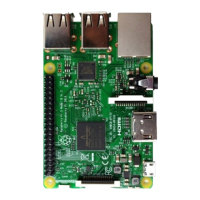14
15
16
17
18
19
20
21
22
23
24
25
26
27
28
29
30
31
32
33
34
35
36
37
38
39
40
41
delay(1);
}
}
void stopAlertor(int pin){
softToneWrite(pin,0);
}
int main(void)
{
if(wiringPiSetup() == -1){ //when initialize wiring failed,print message to screen
printf("setup wiringPi failed !");
return 1;
}
pinMode(buzzeRPin, OUTPUT);
pinMode(buttonPin, INPUT);
softToneCreate(buzzeRPin);
pullUpDnControl(buttonPin, PUD_UP); //pull up to high level
while(1){
if(digitalRead(buttonPin) == LOW){ //button has pressed down
alertor(buzzeRPin); //buzzer on
printf("alertor on...\n");
}
else { //button has released
stopAlertor(buzzeRPin); //buzzer off
printf("...buzzer off\n");
}
}
return 0;
}
The code is the same to the active buzzer logically, but the way to control the buzzer is different. Passive
buzzer requires PWM of certain frequency to control, so you need to create a software PWM pin though
softToneCreate (buzzeRPin). Here softTone is dedicated to generate square wave with variable frequency and
duty cycle fixed to 50%, which is a better choice for controlling the buzzer.
softToneCreate(buzzeRPin);
In the while cycle of main function, when the button is pressed, subfunction alertor() will be called and the
alertor will issue a warning sound. The frequency curve of the alarm is based on the sine curve. We need to
calculate the sine value from 0 to 360 degree and multiply a certain value (here is 500) and plus the resonant
frequency of buzzer. We can set the PWM frequency through softToneWrite (pin, toneVal).
void alertor(int pin){
int x;
double sinVal, toneVal;
for(x=0;x<360;x++){ //The frequency is based on the sine curve.
sinVal = sin(x * (M_PI / 180));
toneVal = 2000 + sinVal * 500;
softToneWrite(pin,toneVal);

